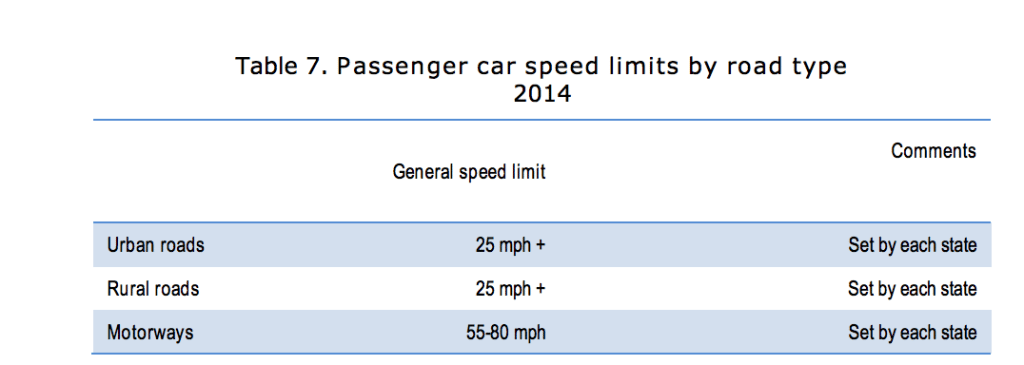Impaired driving
Each state makes its own laws governing BAC levels for law enforcement action. In general, state BAC laws fall into three categories: zero tolerance; 0.08 BAC per se; and high BAC (0.08+).
All 50 states have enacted zero tolerance laws (primarily, per se laws at 0.02% BAC or lower) that make it illegal for drivers under age 21 to have any detectable amount of alcohol in their bodies. As of August
2005, all 50 states, the District of Columbia and Puerto Rico, had enacted 0.08 BAC per se laws.
Additionally, as of January 2005, 32 states had enacted high BAC laws.
Fatalities in crashes involving alcohol-impaired drivers have remained around 31% of all fatalities. In the U.S., the blood alcohol limit for driving is .08 g/dL and crashes with drivers testing at this level BAC or higher are considered alcohol-impaired crashes.
In 2012, fatalities in alcohol-impaired crashes
increased by 4.6% over 2011. Perhaps more alarming is that fatalities in alcohol-impaired crashes in which a driver had a BAC of .15 or higher (twice the legal limit) increased by 7.3% over 2011.

Drugs and driving
There is no federal per se law regarding driving under the influence of drugs. Drug per se laws are stated more so that it is illegal to drive with certain drugs in the system. However, not all states in the US have drug per se laws.
Given the differences in state collection and reporting of drug data, and the large amounts of missing data for the influence of drugs in crash scenarios, NHTSA’s data on drugs and crashes should be
interpreted within the constraints of a vast array of limitations. Of those drivers involved in fatal crashes in 2012 (45 337 drivers), 40% (18 120) of them were tested for drugs. Thirty-two percent
(5 765) of those tested for drugs were reported as having drugs in their system at the time of the fatal crash.
Distraction
Distracted driving laws focus on the use of mobile electronic devices while driving. Each state in the US sets its own laws regarding distracted driving. As of April 2014, 12 States and the District of
Columbia (DC) prohibit all drivers from using hand-held cell phones while driving. Thirty-seven States and DC ban all cell phone use by novice drivers. Forty-three States and DC ban text messaging for all
drivers.
In 2012, 3 328 people were killed on U.S. roadways, and an estimated additional 421 000 were injured in motor vehicle crashes that were reported to have involved distracted driving (FARS and GES). Of those people killed in distracted-driving-related crashes, 415 involved reports of a cell phone as a distraction (12% of fatalities in distraction-related crashes). Of those injured in distracteddriving-related crashes, 28 000 involved reports of a cell phone as a distraction (7% of injured people in distraction-related crashes). Ten percent of fatal crashes and 17 percent of the injury crashes in
2012 involved reports of distracted driving.
Speed
NHTSA considers a crash to be speeding-related if the driver was charged with a speeding-related offense, or if an officer indicated that racing, driving too fast for conditions, or exceeding the posted
speed limit was a contributing factor in the crash.
Speeding is one of the most prevalent factors contributing to traffic crashes. In 2012, speed was a contributing factor in 30 per cent of all fatal crashes, and 10 219 lives were lost in speeding-related
crashes.
Speeding-related fatalities increased by 2 per cent from 10 001 in 2011, to 10 219 in 2012.
Speed limits in the United States are set by each state. The table below summarises speed limit ranges in the United States.


Seatbelts and helmets
Primary belt laws (PBLs) allow law enforcement to stop a driver solely for not wearing a seatbelt. As of January 2014, 33 States, the District of Columbia and Puerto Rico have primary seatbelt laws for
front seat occupants. In 16 states, drivers must commit another driving offence before they can be stopped, thus the seatbelt law is referred to as a secondary law. One state has no belt use law –
primary or secondary – for adults. This state does, however, have a primary child passenger safety law that covers all drivers and passengers under 18.
In 2012, among fatally injured passenger vehicle occupants, more than half (52%) of those killed were unrestrained.
The NHTSA conducts a national seatbelt campaign each May, involving more than 10 000 state and local law enforcement agencies. As a result of stronger laws and high visibility enforcement, the
overall seatbelt rate is at an all-time high in the U.S. as reported through the National Occupant Protection Use Survey (NOPUS). In 2013, seatbelt use reached 87%. Seatbelt use has shown an
increasing trend since 1995, accompanied by a steady decline in the percentage of unrestrained passenger vehicle (PV) occupant fatalities during daytime.
Motorcycle helmet laws are issued and enforced by the individual states; there is no national law requiring motorcycle helmet use. As of January 2014, 19 states, the District of Columbia and Puerto
Rico require helmet use by all operators and passengers. In 28 states, only a specific population segment is required to wear helmets. Three states have no motorcycle helmet use laws. The following
table shows the changes in motorcycle helmet usage since 1998.

Source: http://www.internationaltransportforum.org/


